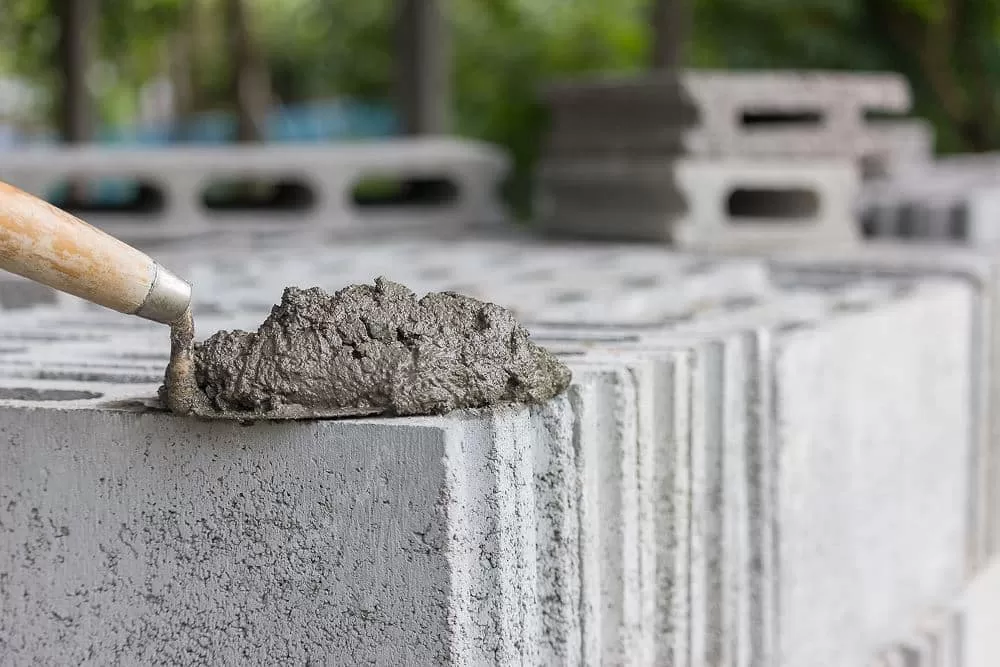
What is the difference between cement D0 and D20
In options D0 and D20, cement grades M500 and M400, also known as “five hundred” and “four hundred”, respectively, are mainly produced. It is intended for masonry and plastering work, and is used in pouring foundations, manufacturing structures, beams and floor slabs from concrete, in residential and industrial construction.
Marking «M500» means that this cement can withstand a load of 500 kg per cm2 finished product area. And markings D0 and D20 show the percentage of additives to clinker in the composition of the material.
There are no additives in the cement mixture grade D0. This is pure clinker. And D20 is characterized by 20% of modifying additives in the composition.
What is clinker and what does cement generally consist of

The lion’s share of the composition of the cement mixture is clinker — a special mass that is made from limestone and high quality clay. After firing at a temperature of 1450 degrees, this raw material turns into a powdery mass. It, in turn, is cement — or forms bonds in concrete after kneading and hardening. Gypsum is also sometimes added to it, but not more than 1% of the volume, so as not to change the performance of the material.
In the production of some brands, special modifying additives are introduced into the mixture. They change the properties and performance of the material. However, in some cases, during construction, these «additives» are undesirable, and the cement composition with them is used primarily for finishing and structural work, in which high strength is not needed.
There are no modifying additives in D0 cement, it consists only of clinker and, in some cases, gypsum. This material is characterized by the highest strength, excellent frost resistance and moisture resistance, as well as maximum durability. «Five hundred» with D0 can withstand not only nominal loads of 500 kg per m2he is able to cope with more.
D20 contains 20% modifying «additives». As a result, it has lower strength, lower hardening rate and other performance qualities.
The main difference between cement D0 to D20
The main difference between these brands lies in the scope of use. So, regarding the «five hundred»:
-
M500 D0 is used in the construction of large industrial buildings, bridges, airfield pavements and similar highly loaded structures where high strength is critically required;
-
M500 D20 is used in the construction of private houses, in finishing work and in the casting of monolithic products.
-
Regarding the «four hundred»:
-
M400 D0 is used in private construction, construction of industrial facilities, for the manufacture of monolithic and prefabricated structures;
-
M400 D20 is used in the production of concrete structures.
In this wayWhen choosing cement, it is worth evaluating the intended use — and starting from it when choosing a brand.
Why supplements are needed
It would seem that if all these “additives” worsen the performance of finished concrete structures so much, why introduce them at all? However, they are not included in the mix for the sake of cheapening.
-
«Pure» cement mixtures are characterized by a fairly average resistance to aggressive factors from the external environment. They do not tolerate sudden changes in temperature, especially in conditions with cold winters or even permafrost. They don’t handle the constant exposure to moisture very well. And additions to the composition of the mixture help the material become more practical.
-
The positive effects of «additives» are as follows:
-
Increased resistance to permanent or short-term exposure to moisture, including soil or naturally formed in basements and similar recesses;
-
The ability to resist the appearance and action of corrosion, which is especially important for reinforced concrete structures and various engineering communications laid through floor slabs;
-
Internal strength, which manifests itself with prolonged exposure to low temperatures and sudden changes in climatic conditions.
-
Of course, the solidification rate and mechanical strength of such materials will be lower than that of pure clinker, but in some operating conditions they will prove to be more reliable and durable.
Добавить комментарий
Для отправки комментария вам необходимо авторизоваться.